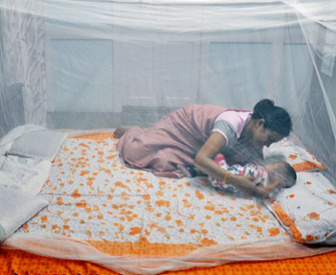Reduction in Malaria Burden Under Intensified Malaria Elimination Project
Reduction in Malaria Burden Under Intensified Malaria Elimination Project
Problem Statement
Bulk of malaria reported from the North-Eastern States like Tripura and Meghalaya and from the peninsular states of Odisha, Chhattisgarh and Jharkhand. Most of these states are characterized by widespread hilly, tribal, forested and conflict-affected areas which are also pockets of high malaria transmission. Presently, about 80% of malaria occurs among 20% of people classified as “high risk” in the above states.
Global Fund to fight AIDS, Tuberculosis & Malaria (GFATM) is supporting for malaria control and elimination in India since 2005. Under Global Fund (GF) support, the malaria elimination in the supported states has accelerated towards the desired goal. Currently, Intensified Malaria Elimination Project (January 2018 – March 2021) is implemented in 7 NE states (Arunachal Pradesh, Assam, Meghalaya, Mizoram, Manipur, Nagaland & Tripura) and Madhya Pradesh.
Problem Description
The main strategies of the Global Fund support are Early Diagnosis &Complete Treatment (EDCT); Integrated Vector management including promotion of LLINs; intensive IEC; and capacity building & training of the health workers & community volunteers; mobility support, surveillance, human resource support.
Programme Outcomes
In 2015, Meghalaya is one of the high burden states which contributes 4.16% of total cases, 5.16% of Pf cases and 20.58% of deaths to the country. The state had achieved a tremendous reduction in malaria cases, Pf cases and deaths as shown in Fig 1. There has been 87% reduction in total cases, 86% reduction in Pf cases and 92% reduction in deaths in 2018 in comparison to 2015. There has been 73% reduction in cases, 75% reduction in Pf cases and 100% reduction in deaths as in August, 2019 compared to the previous year.
In Meghalaya, the major contributing districts are East Garo hills, West Garo hills and South Garo Hills. In these three districts as a whole, there has been 86% reduction in cases, 86% reduction in Pf cases and 93% reduction in deaths in 2018 from 2015. In aforementioned districts, till August, 2019 in comparison to 2018, there is overall 75% reduction in cases, 76% reduction in Pf cases and 33% reduction in deaths. Some pragmatic steps taken were : a targeted technical approach using a package of effective tools, data-driven decisionmaking, involvement of communities, decentralized implementation and control of finances, skilled technical and managerial capacity at sub national levels, hands-on technical and programmatic support from partner agencies, and sufficient and flexible financing. All these factors were essential in achieving success along with acceptance of LLINs by community.

Source : We Care Coffetable Book, Good Replicable and Innovative Practices - 2019
Last Modified : 6/12/2021
This topic provides information about Ashraya - Pa...
This topic provides information about Block Task F...
This topic provides information about Organic Valu...
Provides information about clean drinking water av...
